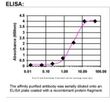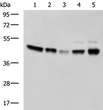Rabbit Polyclonal Antibody against GLUT1
| Applications | ChIP, FC, ICC/IF, IHC, WB |
| Reactivities | Human |
| Conjugation | Unconjugated |
| Immunogen | A synthetic peptide made to an N-terminal region of the human GLUT1 protein (between residues 1-100). [Swiss-Prot #P11166] |






























































































































































































































































 Germany
Germany
 Japan
Japan
 United Kingdom
United Kingdom
 China
China












![HEK293T cells were transfected with the pCMV6-ENTRY control (Left lane) or pCMV6-ENTRY AKT2 ([RC217733], Right lane) cDNA for 48 hrs and lysed. Equivalent amounts of cell lysates (5 ug per lane) were separated by SDS-PAGE and immunoblotted with anti-AKT2. Positive lysates [LY419836] (100ug) and [LC419836] (20ug) can be purchased separately from OriGene.](https://cdn.origene.com/assets/images/antibody/116/ta590729-1-w.jpg?d=110x100)















































